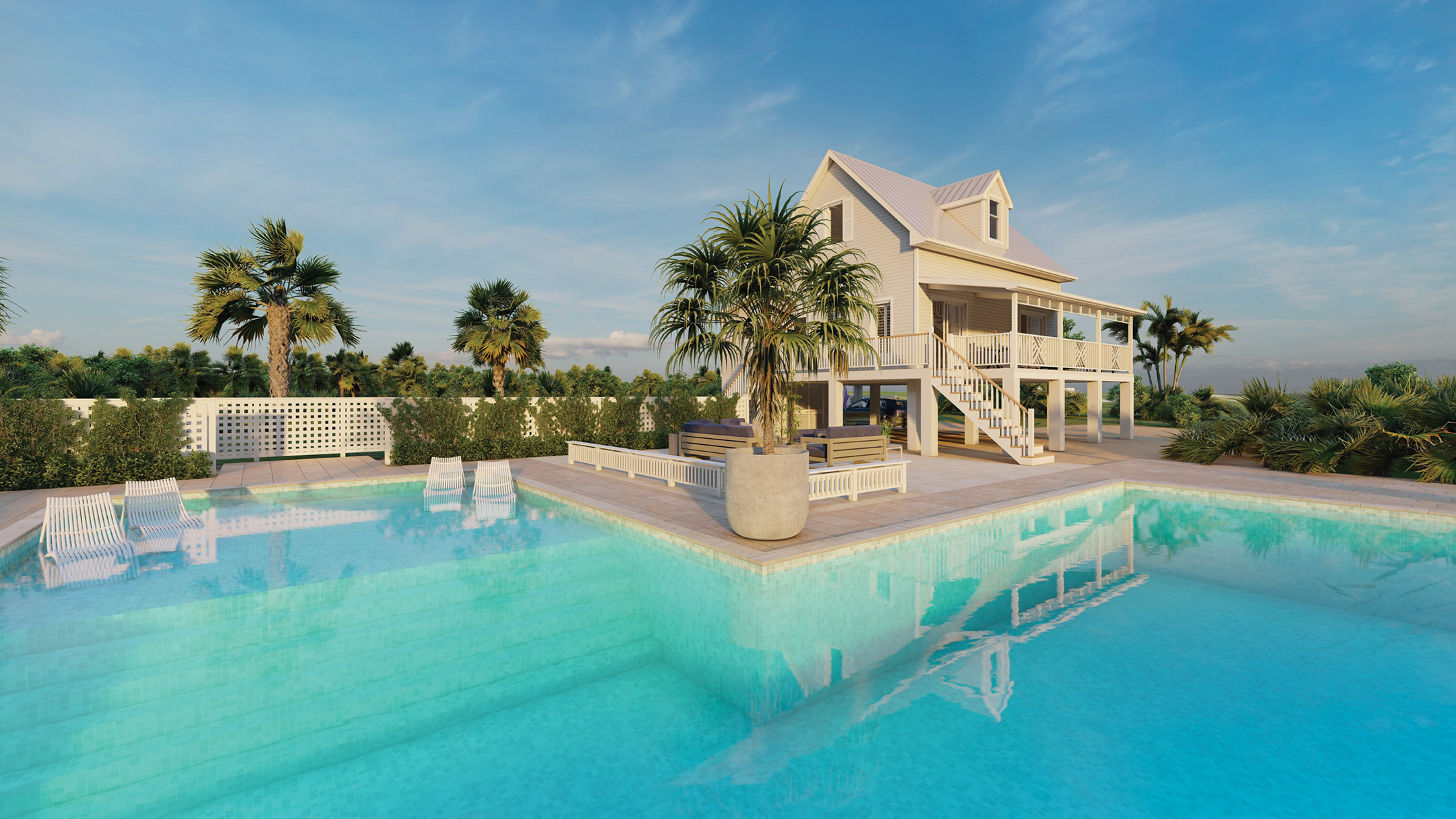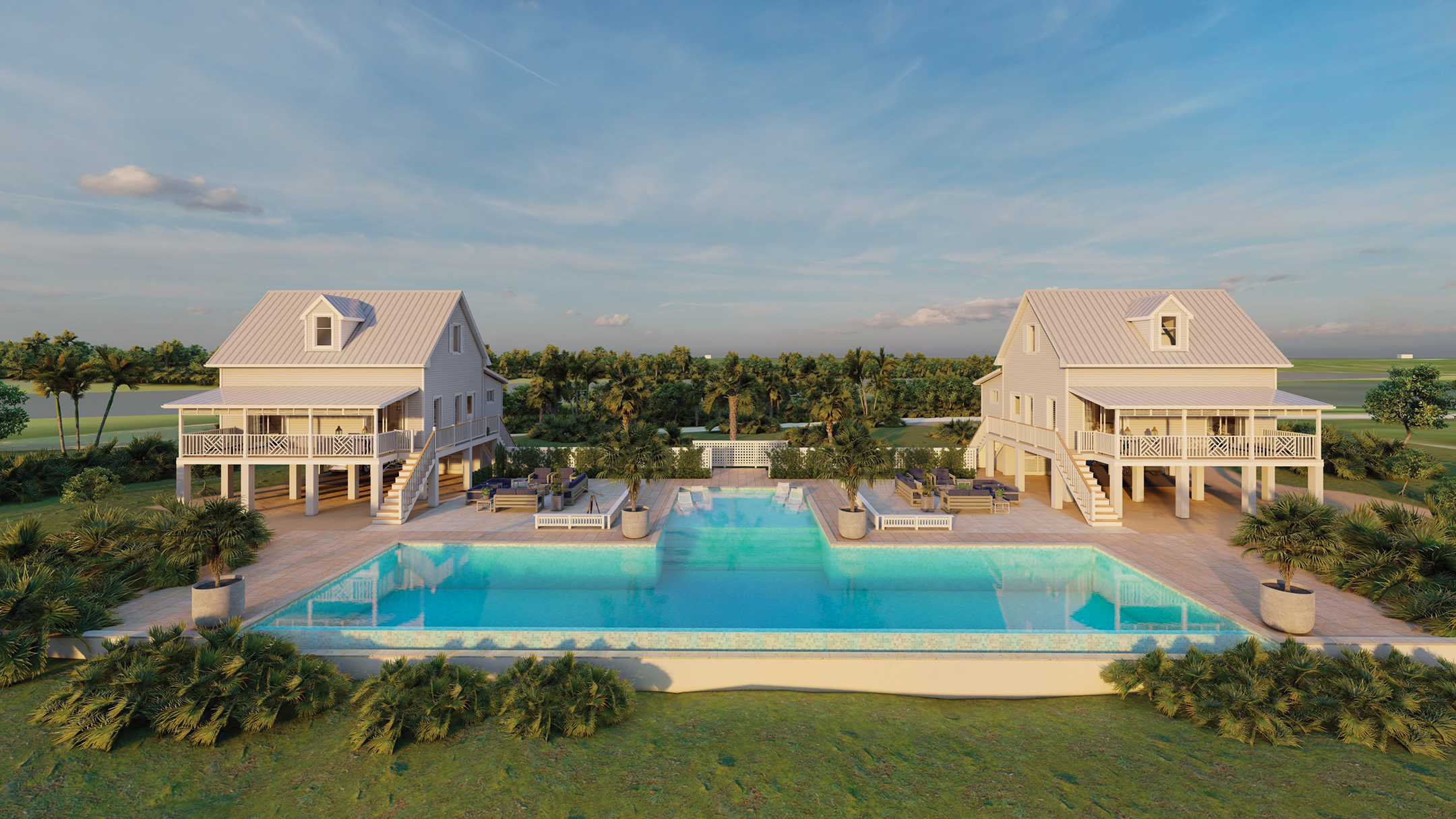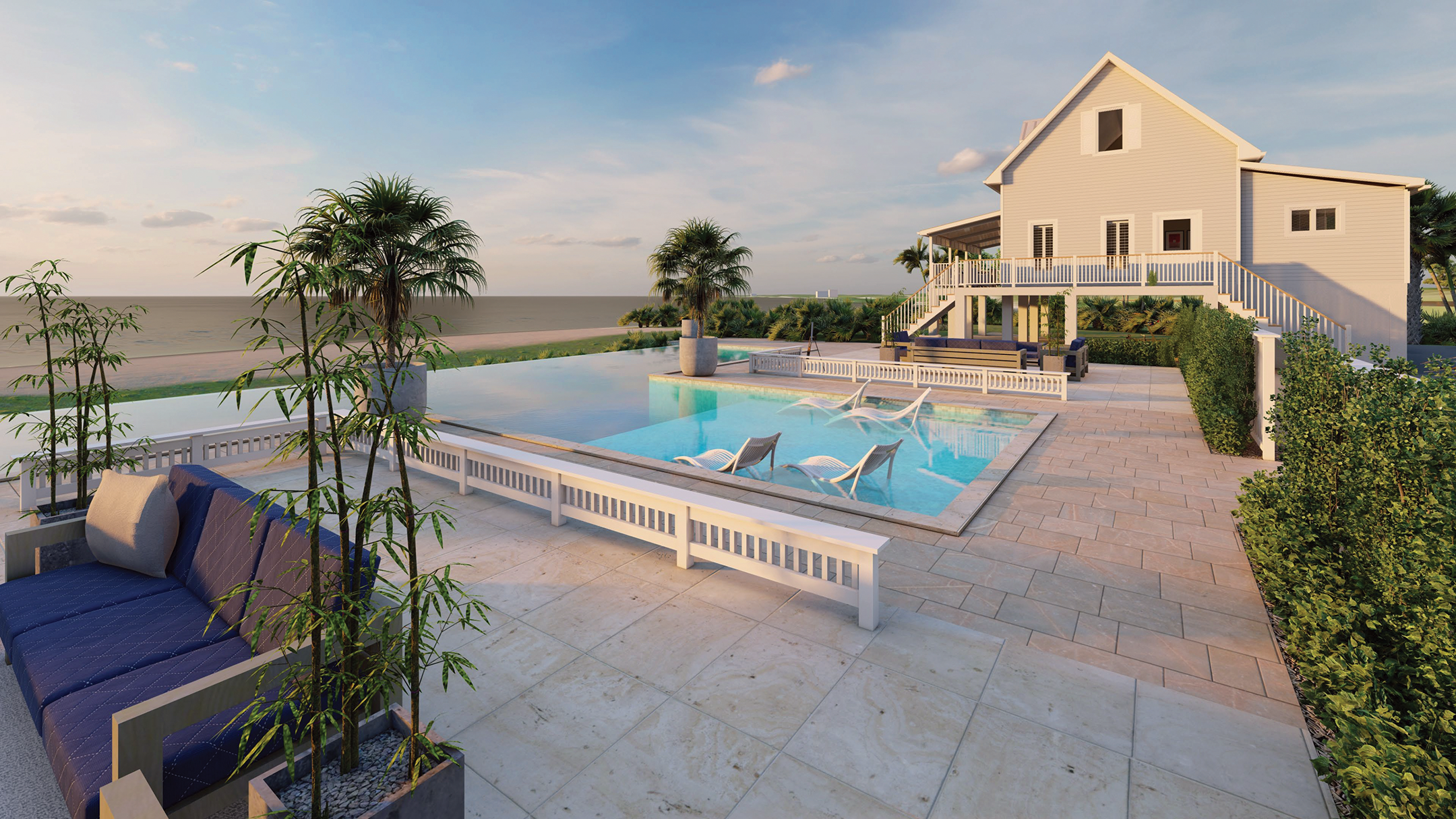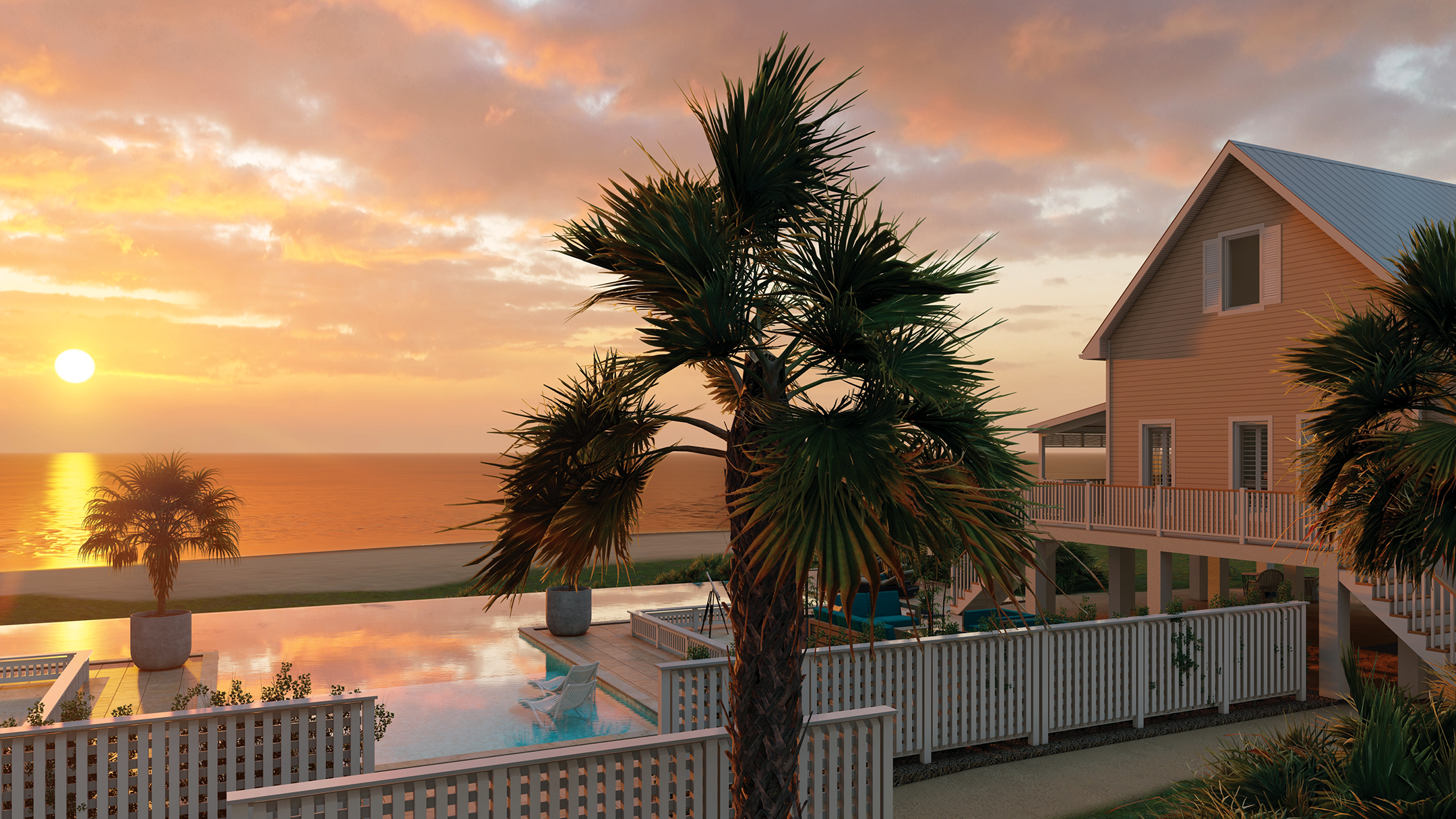
THE PALMS, LITTLE CAYMAN COTTAGES
CAYMAN ISLANDS
FEATURE | THE PALMS, LITTE CAYMAN COTTAGES, CAYMAN ISLANDS
Building in Paradise: Davenport Development’s inaugural modular home construction.
As tropical paradises go, it doesn’t get much better than Little Cayman. A tiny isle of sandy roads, sleeping iguanas and sparkling, white sand beaches, the smallest
of the Cayman Islands rarely fails to charm with its pristine nature and unparalleled tranquillity.
But the remote, undeveloped nature of the island is also its greatest challenge – particularly when it comes to building.
CONSTRUCTION CHALLENGES IN LITTLE CAYMAN
Little Cayman is an extremely costly and complicated place to build.
First, there is the price of concrete. In typical MCU or ICF builds, concrete is the most expensive component of a construction project – and in Little Cayman, the cost
of concrete is almost twice that of Grand Cayman.
The second is the shipping. Every roof tile, piece of lumber, pot of paint, and box of nails has to be shipped in, either direct from Miami or from Grand Cayman. This adds to the cost, timeline, and uncertainty in the logistics and associated supply chain costs.
And then there is the question of the workforce. Little Cayman is home to just two full-time builders who are – unsurprisingly – booked up for years to come. The options
are, therefore, either to wait or assume the cost of transporting and housing builders, electricians, plumbers, and more from Grand Cayman.
So while acquiring a beachfront lot in Little Cayman may be more affordable than in Grand Cayman, constructing a home is twice as expensive and can take a good deal longer.
A POTENTIAL SOLUTION
Davenport Development believes modular homes could be the solution.
“The concept of modular homes has been kicked around a fair bit in Cayman,” says Dan DeFinis, CEO at Davenport Development. “But it’s problematic, either because the homes are not hurricane-proof or because the modules made in factories are larger than a shipping container, so to get them here incurs oversize charges, which gets extremely expensive.”
Davenport Development, a company with a history of innovation in construction, is pioneering a modular system from a UK-based manufacturer, Bauhu, that overcomes these issues. And they are trialling it in Little Cayman in order to track every dollar involved in building modular homes on that remote island. So at the end of the project, they will have a clear picture of the total cost of building this way compared to traditional construction methods.
THE MODULAR SYSTEM
Bauhu specialises in hurricane-resistant modular buildings. Their designs, which range from traditional Caribbean to contemporary in style, are composed of sturdy steel beams and columns, with wall panels that bolt into them. Other than the foundations, no concrete is required to construct these homes.
Because the homes come in kit form, DeFinis explains, all doors, windows, flooring, bathroom equipment, kitchen cabinetry, and wall finishes are included, which eliminates much of the risk associated with price fluctuations. And as they
are precision engineered in a factory, they can be assembled relatively quickly on-site, reducing labour costs.
THE LITTLE CAYMAN COTTAGES
Davenport Development’s test project comprises two Caribbean-style cottages on the island’s south shore, which when complete, will be offered as short-term rentals. Each is a three-bedroom, three-and-a-half-bath layout, with an open plan kitchen and living room with their pitched roofs (which house a loft bedroom) and shady verandas, these cottages fit easily into the island landscape. To provide storm surge protection, Davenport Development has chosen to build the cottages on stilts, which has the added benefit of better views and creates a shaded under-storey parking area.
Once the foundations are laid, Davenport Development estimates a timeline of around six months to build and finish the cottages. They began erecting the framework in early February, and the first cottage was enclosed with a roof and windows in around two months. By July, it is expected that the floors, kitchens and bathrooms will be installed and construction will be complete.
ADDITIONAL COST CONSIDERATIONS
Although every nut and bolt is included in the kit price, additional costs will be incurred. One is the foundations, which have to be designed and laid. Another is the mechanical, electrical and plumbing (MEP) design and installation. Because the manufacturer sells their designs in multiple jurisdictions, all of which have different codes, DeFinis points out, it is not feasible for them to include this component.
The other significant expense to consider is labour. Davenport Development sent their staff to Little Cayman to build and finish the cottages. This, therefore, adds housing, food, travel and other related costs to the project. All of this will be factored into
the final calculations.
“Our hope,” says DeFinis, “is that the speed of the build and the reduced need for concrete will make it an attractive option for construction in Little Cayman.”
If the project proves cost-effective, Davenport Development will become the official Bauhu distributors for the Cayman Islands and thus increase the options for those looking to build in Little Cayman.
Words by Natasha Were. Images courtesy of www.davenport.ky and www.bauhu.com
FOR MORE INFO ABOUT THE PALMS, LITTE CAYMAN COTTAGES, CONTACT DAVENPORT DEVELOPMENT LTD.:
Call: 345.949.4979
Email: thepalms@davenport.ky
Visit: www.davenport.ky
FOR MORE INFO ABOUT THE PALMS, LITTE CAYMAN COTTAGES, CONTACT DAVENPORT DEVELOPMENT LTD.:
Call: 345.949.4979
Email: thepalms@davenport.ky
Visit: www.davenport.ky



